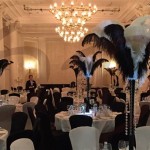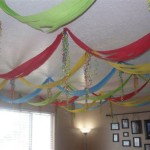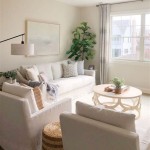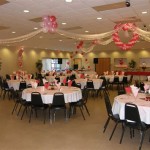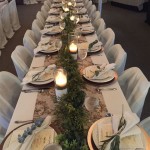Living Room Decorating Ideas With Red Sofas
A red sofa can serve as a striking focal point in a living room, adding vibrancy, warmth, and personality to the space. However, incorporating such a bold piece requires careful consideration of complementary colors, textures, and overall design principles to create a cohesive and aesthetically pleasing environment. This article explores various decorating ideas for living rooms featuring red sofas, providing guidance on how to balance this powerful color with other elements to achieve a harmonious and stylish interior.
The versatility of red allows it to function within various design styles, ranging from traditional to modern. The specific shade of red, the fabric of the sofa, and the surrounding décor all contribute to the overall atmosphere of the room. A deep, rich burgundy leather sofa, for example, lends itself well to a classic, sophisticated setting, while a bright, poppy red fabric sofa might be more suitable for a contemporary or eclectic design. The key lies in understanding the nuances of red and how it interacts with other visual elements.
Choosing the Right Shade of Red
The first step in decorating with a red sofa is determining the most appropriate shade of red for the space. Red is not a monolithic color; it encompasses a wide spectrum of tones, each with its own distinct characteristics. Consider the existing color palette of the room, the amount of natural light, and the desired mood when making this decision. For instance, a room with limited natural light might benefit from a brighter, more vibrant red to inject energy, while a room with ample natural light might be able to handle a deeper, more muted shade.
Different shades of red also evoke different emotions. Fire engine red is often associated with excitement and boldness, while a brick red conveys a sense of warmth and comfort. Crimson red speaks of elegance and luxury, while a rusty red suggests a more rustic and earthy feel. Think about the feeling that individuals seek to create in the living room and select a red that aligns with that vision. It is helpful to obtain fabric swatches of various red shades and view them in the room under different lighting conditions to ensure they complement the existing features.
Furthermore, consider the undertones of the red. Some reds have warm undertones, leaning towards orange or yellow, while others have cool undertones, leaning towards blue or purple. Matching the undertones of the red with the undertones of other elements in the room, such as the wall color and flooring, can create a more harmonious and balanced look. For example, a red with warm undertones pairs well with other warm colors like beige, gold, and yellow, while a red with cool undertones complements cool colors like gray, silver, and blue.
Complementary Color Palettes
Once the right shade of red has been chosen, the next step is to develop a complementary color palette that enhances the impact of the sofa without overwhelming the space. Red is a powerful color, and it is essential to choose colors that either contrast with it effectively or blend seamlessly to create a cohesive look. Several color palettes work well with red sofas, each offering a unique aesthetic.
A classic and timeless combination is red and white. White provides a crisp, clean backdrop that allows the red sofa to stand out as a focal point. Accents of black or gray can be added for further definition and visual interest. This palette is particularly well-suited for modern and minimalist designs. Off-white or cream can also be used for a softer, more traditional look.
Another effective palette is red and gray. Gray provides a neutral and sophisticated backdrop that tones down the intensity of the red. Different shades of gray can be used to create depth and dimension in the room. Light grays create a calm and airy atmosphere, while darker grays offer a more dramatic and luxurious feel. Red and gray can be enlivened with pops of yellow, blue, or green.
For a warmer and more inviting feel, consider a palette of red and beige or brown. These earthy tones complement the warmth of the red and create a cozy and comfortable atmosphere. Wood furniture, natural textures, and organic materials work well with this palette. Accents of gold or copper can add a touch of elegance and sophistication.
For a bolder and more adventurous look, explore complementary colors like green or blue. Red and green are opposite each other on the color wheel, creating a vibrant and dynamic contrast. However, it is important to use these colors in moderation to avoid overwhelming the space. For instance, a red sofa could be paired with green plants, cushions, or artwork. Red and blue is another classic combination, offering a balance of warmth and coolness. Navy blue, in particular, complements red beautifully, creating a sophisticated and nautical feel.
Incorporating Textures and Patterns
In addition to color, texture and pattern play a crucial role in creating a visually appealing and balanced living room with a red sofa. Varying textures and patterns adds depth and interest to the space, preventing it from feeling flat or monotonous. Consider incorporating a mix of soft and rough textures, smooth and bumpy surfaces, and simple and complex patterns to create a dynamic and inviting atmosphere.
Texture can be introduced through a variety of materials, such as throws, cushions, rugs, and curtains. A soft, plush throw draped over the red sofa can add a touch of comfort and luxury. Cushions in different textures, such as velvet, linen, or faux fur, can enhance the visual appeal of the sofa and provide additional comfort. A textured rug, such as a shag rug or a woven rug, can add warmth and dimension to the floor.
Patterns can be incorporated through cushions, curtains, artwork, and wallpaper. However, it is important to use patterns sparingly and strategically to avoid overwhelming the space. If the sofa is a solid red, consider using patterned cushions to add visual interest. Choose patterns that complement the overall color palette of the room. Geometric patterns, floral patterns, and abstract patterns all work well, depending on the desired aesthetic.
When using patterns, it is important to consider the scale of the pattern. Large-scale patterns can make a small room feel even smaller, while small-scale patterns can get lost in a large room. Choose a pattern that is proportionate to the size of the room and the furniture. Also, consider mixing different scales of patterns to create a more dynamic and interesting look.
Further, consider the impact of lighting. Natural and artificial light change the saturation and intensity of red. It is helpful to observe how the sofa looks in different lighting conditions throughout the day. Positioning lamps strategically can soften the boldness of the color, creating a warmer and more inviting ambiance. Conversely, direct sunlight can make the red appear more vibrant and energetic.
Ultimately, the success of decorating with a red sofa hinges on achieving a harmonious balance between color, texture, and pattern. Careful consideration of these elements will transform a living room into a stylish and inviting space that reflects individual taste and aesthetic preferences.

17 Stylish Living Room Designs With Red Couches Couch Sofa

Pin On For The Home

Bold And Beautiful 7 Red Hot Living Room Ideas Inspiration Furniture Choice

Living Room With Red Couches Amazing Decor Ideas

20 Top Modern Red Sofa Design Ideas For Living Room Livingroomideas Livingroomdecorations Couch Decor

22 Beautiful Red Sofas In The Living Room Home Design Lover Sofa Couch

Eye For Design Decorating With Red Furniture

30 Ways To Incorporate A Red Sofa Into Your Interior Digsdigs

17 Stylish Living Room Designs With Red Couches

10 Burning Hot Red Living Room Design Ideas Cafe
